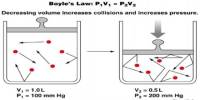The Sole Bonding System of Micro Cellular Rubber (MCR)
INTRODUCTION
Over the last 40 years there has been a major change in soling materials used in the Footwear trade. Leather has been the traditional soling material for Footwear. But in 1980 only about 5% of shoes have leather soles. Nowadays most soles are made of rubber or plastics which are classed as synthetic soling materials. So new types of soling needs new types of adhesion method or technique with different types of upper materials.
The scientific study of adhesion, Zygology is new and scarcely known. It is the science of joining things which includes the study of adhesion and welding, riveting and all forms of mechanical jointing. It includes the principle of –
Specific adhesion:
Mechanical adhesion:
Properties of an ideal soling material:
Processing needs:
Wearing needs:
- Low density (light weight for comfort)
- High elasticity (Soles must not spread especially in hot conditions)
- High resilience (for energy return)
- High flexibility (for comfort in walking)
- Good flex crack resistance, especially in cold condition
- Good wet and dry slip resistance (for safety)
- Good abrasion (wear) resistance.
- ood water resistance (for comfort)
- Good rest resistance.
- Good cushioning ability (for comfort)
- Good shock absorption (to protect wearer from injury)
- Good ageing resistance.
- Good appearance.
Micro cellular Rubber
When rubber compound is added with blowing agent, fine cell structure is formed on the vulcanisate after curing, this rubber vulcanisate is called micro cellular. The cell structure of micro cellular is normally closed with gas trap within the cell. Since the blowing can be controlled the final products density varies, the bigger the cell size the lower the density and the softer the material. If the cell size is small the density is higher and the harder the product. The properties of micro cellular rubber is normally inferior compared to solid vulcanisate, this is because the cell initiates failure. Some of the properties deteriorated are tensile properties, hardness, tear strength, abrasion and compression set. The most preferable properties of micro cellular are low density, lightweight, high impact absorption and soft that assured comfort.
The application of micro cellular rubber is very wide from toy to important engineering applications. Some of the applications are sound absorption, vibration isolation, insulation, padding, floor backing, wall lining, footwear components cushioning and many others. For applications where physical properties is critical and light weight is required then low density is normally used and for applications where some engineering requirements are needed then higher density is used. In footwear application abrasion is important, the micro cellular used is normally medium density and of harder vulcanisates.
















